
John Davies began his employment as the Postage Stamp Printer on the staff of the Postmaster General's Department in February 1862. The previous printer, Richardson, had been a private contractor and had been able to insist on his choice of paper.
The first Davies prints
As Davies was an employee he had to use the star watermark paper that had been sent from London along with the plates in 1854. His imperforate prints are therefore on the same paper as the original London prints which has led to many wrong identifications by over-optimistic collectors.
The numbers given below for 1862-64 include those on pelure paper in 1862, on NZ watermarked paper in 1864 together with those perf 13 in Dunedin in 1863 and perf 12½ after August 1864.
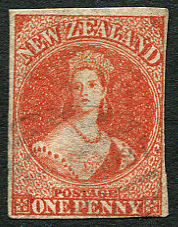
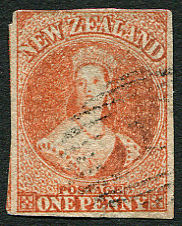
One penny
The 1d was originally in orange vermilion, then vermilion and from 1863 in carmine vermilion. There was also a small printing in carmine which can be confused with the London prints.
The numbers printed were: 148,080 in 1862, 326,640 in 1863 and 457,920
in 1864.
Two pence
The two pence was initially in a deep blue followed by slate blue. From 1863, the blue plate began to wear and by 1864 it had become very worn.
Around four and a half million copies of the 2d were issued in 1862-64.
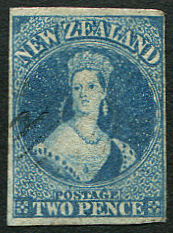

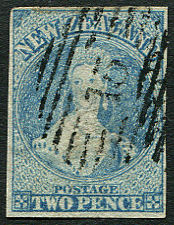
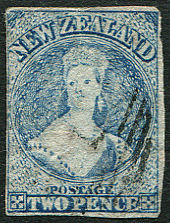
Six pence
As 6d was the standard rate of postage to the UK, it is the most common value after the 2d and appeared in a wide range of shades.
The first printings were in black brown while in the middle of 1863, the colour changed to brown, in late 1863 to a full rich red brown and in 1864 to a paler red-brown.
A total of two million copies were printed in 1862-64.
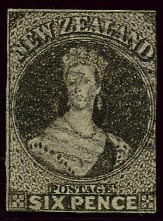
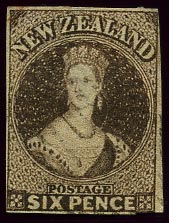

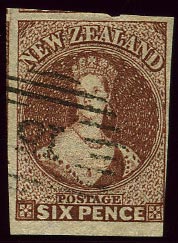
One shilling


The 1s green occurs in several shades of green and yellow-green.
Only 47,760 copies of the 1/- value were printed in 1862, 90,720 in 1863 and 143,280 in 1864.
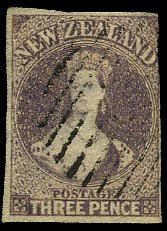
Three pence
The 3d value was issued on 1 January 1863. The colour was brown-lilac.
120,000 copies were printed and
there was no further printing until 1865.
The above information is taken from The Postage Stamps of New Zealand Vol 1, published by the Royal Philatelic Society of New Zealand in 1938. All scans were made by the author.